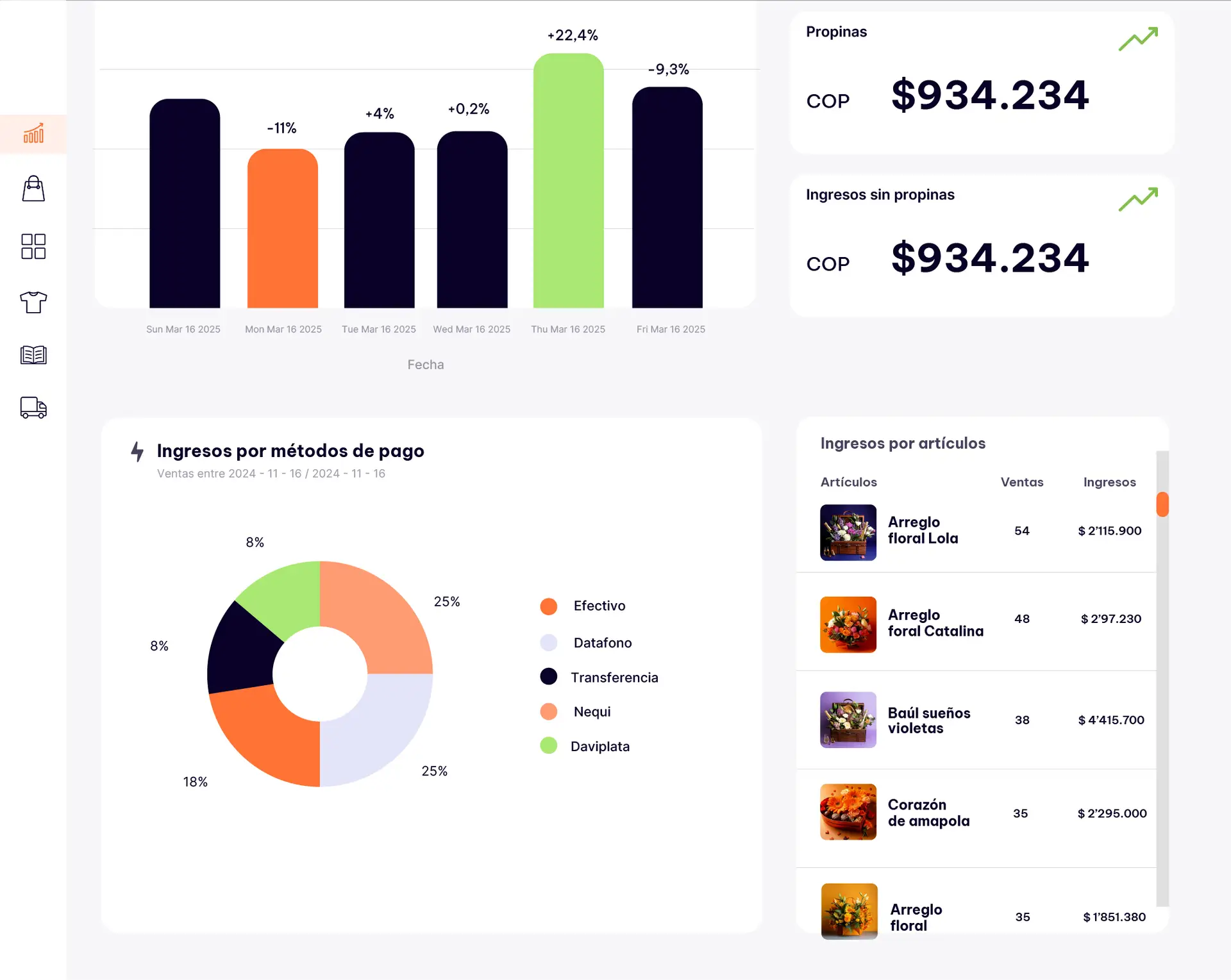Introduction: The Hidden Stress That Slows Your Store
Inventory is like the heartbeat of your business. When it flows well, your store feels healthy. When it’s out of rhythm — when products are missing, overstocked, or scattered — everything suffers.
Customers walk in asking for an item, and you realize you’re out.
You order extra to avoid that again… and it doesn’t sell.
You waste hours counting boxes — and still don’t feel in control.
Sound familiar?
You’re not alone.
Inventory management is one of the most common — and most frustrating — challenges for small retailers. Especially for those who didn’t come from a logistics or tech background.
But here’s the good news: you don’t need to be an expert to manage your inventory like a pro. You just need a system that works for you.
That means:
- Simple routines you can keep up with
- Clear data that helps you decide faster
- Tools that do the heavy lifting — instead of adding more work
This article is a step-by-step guide to managing your store’s inventory without the headaches. Whether you’re using spreadsheets, a POS system, or pen and paper — you’ll learn how to:
- Keep track of what matters
- Avoid costly mistakes
- Stay in control of your cash flow
- Spend less time worrying, and more time growing
We’ll break it down into five essential steps — with examples and practical exercises in each one.
Let’s start by addressing the root cause of most inventory problems: the lack of real visibility.
1. Get Real Visibility (Not Just Lists and Guesses)
Many store owners think they “know” what they have in stock — until they don’t. Real visibility means knowing, in real time, what’s selling, what’s stuck, and what needs your attention.
Why it matters:
- You avoid duplicate orders and overstock
- You catch low-stock items before it’s too late
- You stop wasting money on what doesn’t move
How to improve visibility:
- Use a POS system with real-time inventory tracking
- Set minimum and maximum stock levels for each product
- Tag products by category or location (e.g., backroom, display, online shelf)
Tip:
If you’re using spreadsheets, keep it updated daily. It’s not about perfection — it’s about building awareness and control.
Real-world example:
Carlos runs a small electronics store. He thought chargers were fully stocked. But when he finally did a count, he had 2 left. One customer later, he was out — and missed 6 sales over the weekend. He now checks high-turnover items every Friday.
Practical Exercise:
List your 10 best-selling products. For each, write the current stock and how many you sold last week. Then ask: Am I too low? Too high? Use this to set “watch zones” for next week’s review.
2. Simplify Your System (So You Actually Use It)
The best inventory system isn’t the most complex — it’s the one you’ll actually use. If your current method feels overwhelming, chances are you’re avoiding it.
Why it matters:
- A simple system is easier to maintain
- Your team can follow it without confusion
- You save time — and reduce errors
What to simplify:
- Categories: Keep them clear and limited (e.g., “snacks,” not “dry food > chips > local”)
- Naming: Use product names your team can understand and search easily
- Tools: Don’t jump to software with 100 features if you only need 5
Tip:
If you’re switching systems (e.g., from Excel to POS), migrate gradually. Start with your top 20 products. Test it. Then expand.
Real-world example:
Lucía owns a home decor shop. Her Excel sheet had 40 columns — and she stopped updating it. She switched to a simple POS with photos, tags, and daily alerts. Her team picked it up in 2 days — and errors dropped by 70%.
Practical Exercise:
Review your current system. What’s the hardest part to update or understand? Eliminate 1 column, 1 tag, or 1 extra step. Keep only what helps you make better decisions.
3. Track Movement — Not Just Stock
Knowing how much you have isn’t enough. You need to know how fast it moves — and which products are earning their place on the shelf.
Why it matters:
- Helps with smart reordering
- Prevents dead stock and waste
- Boosts profit by focusing on high-performance items
What to track weekly:
- Units sold per product
- Sell-through rate (units sold ÷ units received)
- Days on shelf (how long before something sells)
Bonus insight:
Sometimes the problem isn’t the product — it’s the display, price, or timing.
Real-world example:
Diego sells handmade soaps. His best-seller wasn’t moving at one store. He checked the numbers — and realized it was placed too high on the shelf. He moved it to eye level. Sales doubled the next week.
Practical Exercise:
Pick 5 products you’ve stocked for more than 30 days. How many units have sold? Are they moving as expected? If not, adjust one variable: location, price, or visibility — and track changes over 7 days.
4. Use Data to Decide — Not Just Instinct
Every retailer has a gut feeling. But relying only on instinct can lead to costly misjudgments. When you use data — even simple weekly numbers — you turn decisions into strategy.
Why it matters:
- Reduces emotional decisions (like panic-buying or discounting too fast)
- Improves planning for seasons, holidays, and restocks
- Helps you explain choices to staff or partners
What data to rely on:
- 30-day sales trends
- Product margins (how much profit per item)
- Inventory aging reports (what’s been sitting too long)
- Cost per unit vs. space it takes up
Start simple:
Don’t track 20 metrics. Start with 3: sales, margin, and shelf life.
Real-world example:
Ana runs a clothing store. Her instinct said to reorder summer dresses. But her data showed margins were higher on accessories, and dresses moved slower this year. She invested in scarves and jewelry instead — and exceeded her weekly revenue target by 18%.
Practical Exercise:
Choose one recent decision you made based on “feeling.” Go back and review the numbers: did the data support your choice? Use this reflection to guide your next inventory move.
5. Automate What You Can — and Delegate the Rest
Inventory management doesn’t have to be manual. In fact, the more you automate or delegate, the more time and mental space you gain to lead and grow.
Why it matters:
- Frees your time for high-value tasks
- Reduces human error
- Keeps your systems running — even if you’re away
What to automate (using POS or tools):
- Low-stock alerts
- Reorder points
- Daily sales reports
- Expiry reminders
What to delegate:
- Weekly product counts (to a trusted staff member)
- Tagging or barcoding
- Checking for price mismatches
Real-world example:
Martin runs a liquor store. He used to do all inventory checks himself — until he trained his team to do weekly cycles by section. He now reviews a dashboard every Monday — and spends his afternoons talking to customers and planning campaigns.
Practical Exercise:
Make a list of 5 inventory-related tasks you do regularly. Circle 1 you can automate this week and 1 you can delegate. Set it up. Test it. See how it frees your schedule.
Final Reflection: Clarity Over Chaos
Inventory can feel like a storm. It’s invisible until it hits — until something runs out, piles up, or drains your cash without warning.
But managing inventory well isn’t about working harder.
It’s about building clarity.
Clarity to know what you have.
Clarity to see what’s moving.
Clarity to act before things go wrong.
You don’t need a warehouse to think like a logistics pro.
You just need the right habits — applied consistently.
Every tool, every process, every check-in should bring you closer to control and calm — not farther from it.
Because here’s the truth:
You’re not in the business of counting boxes.
You’re in the business of serving people — and inventory is just the fuel that lets you do that well.
So whether you sell sneakers, soap, or snacks…
Inventory is your silent partner.
When you manage it right, it gives back.
It gives you peace.
It gives you time.
It gives you profit.
It gives you freedom.
So start with one step:
Reorganize a shelf.
Check your top 10 products.
Set your first low-stock alert.
Hand off that weekly count.
And keep building.
Because when your inventory runs smoothly… everything else runs better.





